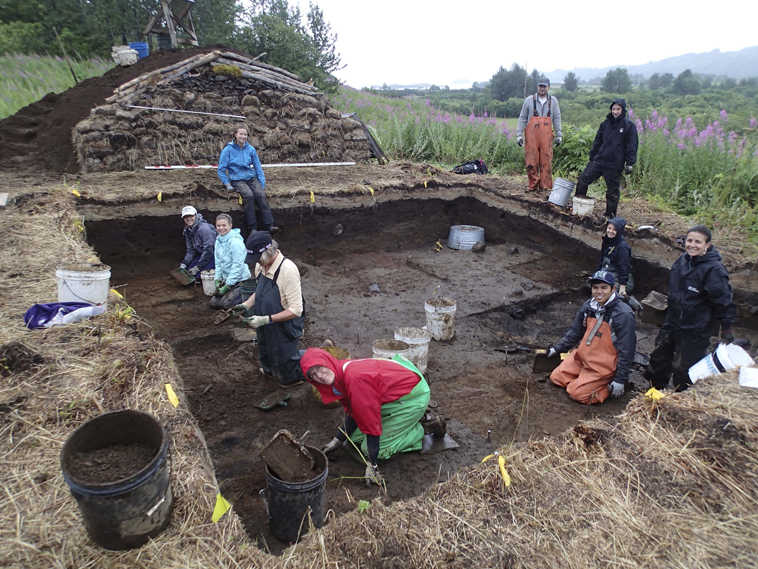KODIAK (AP) — The Alutiiq Museum in Kodiak is preparing for its 17th annual community archaeology dig, where nonprofessionals can participate in real research at an actual excavation site.
The dig is set to begin Monday and continue until Aug. 8 at the Kashevaroff site, which is among those the museum has excavated in Womens Bay, KMXT reported.
Excavation at the site began last year through the Community Archaeology Project, which started in 1997.
The excavation target at the base of Kashevaroff Mountain is believed to be a late prehistoric house as much as 400 years old, according to Amy Steffian, the museum’s director of research and publications. The site predates Russian settlers and also contains evidence of visitation dating back as far as 7,000 years, according to Steffian, who helped start the community project with archaeologist Patrick Saltonstall.
“Around the house we found many large ulus — great big slate cutting knives that are sort of the shape that you would use to split fish,” she said.
Half of the house was excavated last year. Steffian said a second room might be located behind a room that was excavated. But she’s not certain there is.
“You never know what you’re going to find,” she said.
People can participate Mondays through Fridays in the upcoming dig.
An informational meeting and volunteer orientation is set for 7 p.m. Thursday at the museum. Attendance is not mandatory, but the meeting will be an opportunity to get first pick of dates to participate.
Only 20 people, including museum staff, can work the dig each day. People who participate can bring rain gear, bug spray, sack lunches and gloves. Everything else will be provided.
Steffian said that after the dig, there will be opportunities for people to learn once artifacts are brought back to the museum.
As for the digs themselves, there are few such opportunities for teenagers or the general public, according to Steffian.
“When we designed this project we realized that the opportunity to have hands-on experience with prehistory could be really profound for people and could really help people understand not only how Alutiiq folks lived in the past but also the importance of preserving archaeological sites,” she said.

